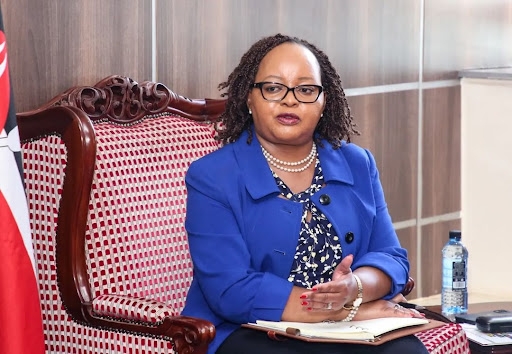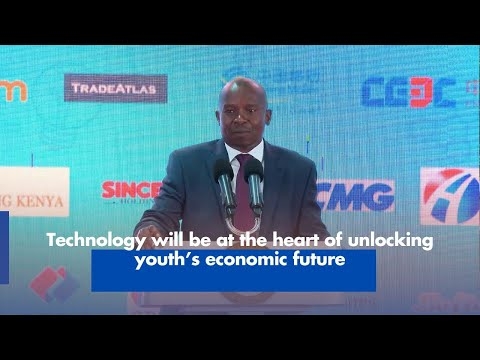The intractable unemployment situation in Kenya is a tinderbox waiting to explode as unemployed youth are finding it hard to achieve their dreams, after years of investment in hard work and hopes.
The abrasive Trade Cabinet Secretary, Moses Kuria, has a point in calling for foreign direct investment in manufacturing but is going about it the wrong way by publicly antagonising foreign businesses because of the race of the investors, instead of creating incentives to attract investors to manufacture products in Kenya.
In other words, investors are smart, and if it is more profitable to manufacture in Kenya rather than import a product, they will do exactly that by bringing in the equipment and hiring Kenyans to work. Kuria just needs to create the right incentives, then sit back and watch the free market do its magic, which will provide more employment opportunities to people.
Kenya does not have to go as far as Asia to learn how countries like South Korea, Singapore, Malaysia, Indonesia and China succeeded in finding development solutions that have led to spectacular employment creation and wealth accumulation.
Rwanda, under the leadership of President Paul Kagame, has embraced Asian lessons and adapted them to their unique situation, creating a nation without corruption, assured security and predictable public policy. Rwanda has an elaborate industrial policy, clear tax incentives for manufacturing, and a conducive environment for profitable business that is raking in large amounts of Foreign Direct Investment.
Focusing on attracting private investment to add value to agricultural produce such as horticulture, potatoes and dairy, as well as manufacture textiles, furniture, electronics and many other products, Rwanda is fully exploiting the vast East, Central and Southern Africa free trade areas, as well as the world markets as a route to creating jobs for their people and building prosperity.
Rwanda Investment Promotion and Facilitation Law of 2021 provides for products with more than 30 per cent local value addition to have a 15 per cent preference over other bids in government procurement and reserves small tenders for local suppliers. Where domestic value addition is at 30 per cent or higher, import duties are waived to zero on raw materials, and charged at only 10 per cent for intermediate products, and 25 per cent for finished products.
As a result, manufacturing is taking off emphatically in Rwanda. In 2022, manufacturing output in constant 2017 prices (real values adjusted for inflation) grew by 10 per cent in Rwanda. In contrast, Kenyan manufacturing stagnated with its share of Gross Domestic Product at constant prices declining from nine per cent in 2017 to 8.6 per cent in 2021.
In the same period, Rwanda manufacturing expanded from 7.7 per cent to 8.6 per cent of GDP. Rwanda has caught up and is overtaking Kenya in manufacturing due to deliberate incentives to attract investment, and an excellent business environment that provides stability, safety and absence of corruption.
With a lot of previously imported goods being substituted by domestically produced products for local consumption and export, this is contributing to macroeconomic stability of Rwanda. The Rwanda Franc is not depreciating as precipitously as other currencies, which tames imported inflation, stems dollar capital outflows due to a historically high Federal Reserve rate in the United States, and creates a virtuous cycle of reinvestment and job creation in Rwanda.
Compared to the US dollar, the Rwanda Franc did not depreciate at all in the last one month, and only lost 5.6 per cent of its value in the last one year, while the Kenya Shilling fell by 2.4 per cent in the last month, and collapsed by a whopping 12.3 per cent in the last one year. The consequence is that Kenya is reeling into a long-term recession and unemployment will increase further. In contrast, Rwanda is thriving and growing at a rapid clip.
Rwanda has successfully addressed unemployment, which is much lower than her African peers. Unemployment in Rwanda stood at 24.3 per cent in November 2022 compared to 32.9 per cent in South Africa.
Kenya does not have recent comparable survey data but given that the Economic Survey shows only 15 per cent of the active labour force in formal employment, a huge number of people are in precarious hand-to-mouth informal engagements for mere survival with inadequate income, scant social security, meagre health insurance and no pensions.
If the regime of President Ruto hopes to deliver on its campaign promise of creating opportunities for ‘hustlers’ to earn more incomes and live better lives, the best way to achieve that requires stable policies to incentivise domestic manufacturing, free market competition and a corruption-free government.
The ‘hustlers’ would inevitably be part of the value chain through being employed, supplying products and services, partnering with foreign manufacturers and setting up their own local manufacturing enterprises.
Rwanda is the success model to follow, and there is no need for Kenya county and national officials to waste public funds travelling to Singapore, the United States, Europe and other far-flung places on so-called ‘benchmarking’ trips to learn nothing.
Economic policy analyst based in New York, USA. @sisulet











